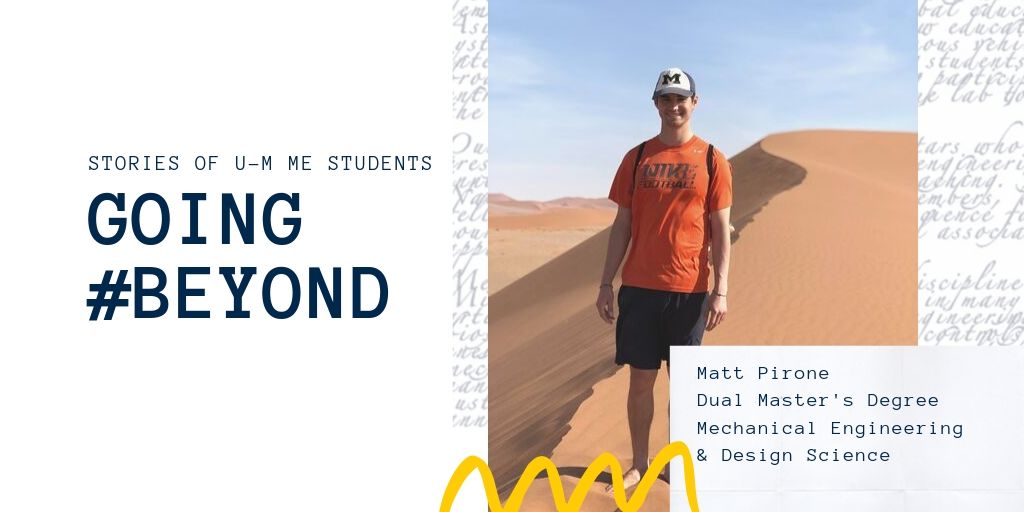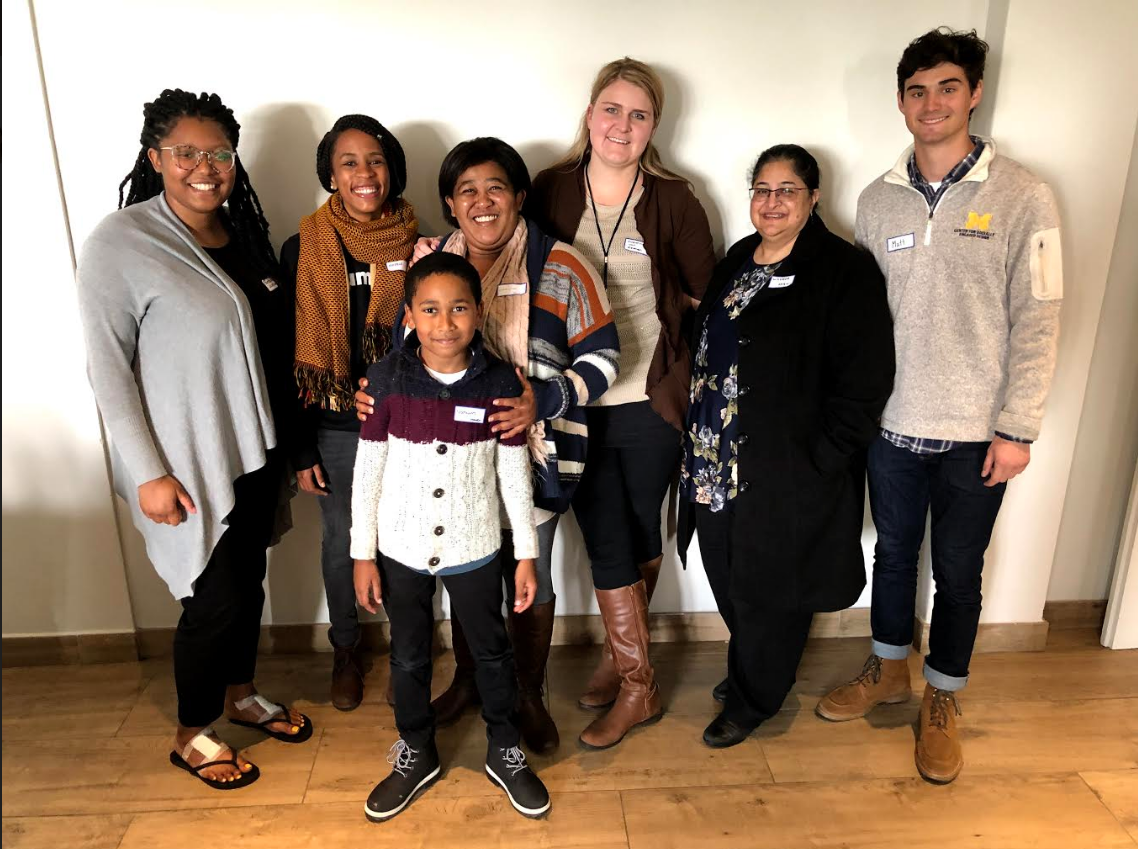

I am starting my second year as a dual master’s student in Mechanical Engineering and Design Science, intending to graduate in the Winter 2020 semester. I earned my bachelor’s degree in Biomedical Engineering at the University of Michigan in 2018 with a biochemical concentration,
but in my final two years of undergrad I became particularly interested in the application of design in an engineering context through two important academic internship experiences. I was a participant for the Global Health Design Initiative (GHDI) and traveled to Ghana for two months to conduct clinical observations to inform my team’s design of a device for post-partum hemorrhage. I was also hired as a program assistant at the UM Center for Socially Engaged Design (C-SED), where I helped develop training protocols and consulted on student-led design projects. For me, working with C-SED united academia, which focuses on theory, and the real world, which focuses on application. By the time I finished my undergraduate studies, I became
interested in applying my growing knowledge of socially engaged design principles specific to the field of sustainable development. Inspired by the faculty and staff associated with C-SED (housed under the ME department), I was motivated to pursue a master’s in ME to further explore the intricacies and perspectives of sustainability and design. I quickly came to grasp that sustainable development requires interdisciplinary cohesion, so I elected to also pursue a master’s in Design Science. The Design Science curriculum is built on a dual-specialization model, meaning you develop two main competencies and apply concepts and methods to facilitate interdisciplinary collaboration and innovation. Being particularly interested in human-centered design and sustainability, I have had the opportunity to take relevant classes from the College of Engineering, the School for Environment and Sustainability, and the School of Information. Each discipline has provided me with a new perspective, but perhaps the most valuable has been my participation with the Global Information Engagement Program (GIEP), which I was able to pursue as my Design Science practicum.
GIEP is a co-curricular program that pairs multidisciplinary teams of graduate students with local NGOs in Cape Town, South Africa to address specific information technology challenges using a highly user-centric approach. The program consists of seven weeks of pre-departure coursework on the Ann Arbor campus during the winter semester and then eight weeks of immersive work in Cape Town. The pre-departure work is aimed at providing the GIEP fellows with a fundamental understanding of the organizations’ missions, challenges, and project goals, as well as cover the basics of user-centered design and how to responsibly enter, engage, and exit a community. While the projects are technical in nature, a farther-reaching objective of GIEP is
for the fellows to have a transformative learning experience.

I elected to work with the Haven Night Shelter, an organization that makes strides towards reintegrating people without a home back into society by providing housing, social and administrative support, and other essential public services. During the project, my teammates and I were stationed at the Head Office, which is located in Cape Town’s Central Business District. Our project objective, as defined by the Haven stakeholders, was to mine and extract knowledge from the large dataset that was collected via their client registration system. Haven hoped to better understand the journey of a client from arrival to exit, specifically to improve shelter services to increase positive exits from the shelters. We faced many challenges throughout the
project, the most prominent being the heterogenous state of the dataset. My team decided to collect supplemental qualitative data by interviewing three levels of staff members across six of the shelter locations. The qualitative data exposed the operational circumstances and challenges that never could have been discovered from the client registration dataset, even in a perfect state. Synthesizing our insights from the dataset and the interviews, we were able to highlight key successes, as well as the areas for improvement. The project concluded with a presentation to the staff in the Head Office and the shelter managers, which resulted in constructive discussion on the topics of standardizing data collection and staff training.
This experience, along with many other experiences, has further exemplified how designing in the real world is highly ambiguous and amorphous, which are not common adjectives used in engineering curricula. While there are engineering design courses available, no classroom experience can truly replicate the learning curve associated with identifying needs and understanding the context that they exist within. That is why I believe it is essential to participate in experiential learning programs, such as GIEP and GHDI, to hone the skills required to identify opportunities and develop the appropriate requirements necessary for an effective solution. A socially engaged design approach complements the technical skills of engineering, facilitating more considerate, impactful, and sustainable innovations.
I am graduating next winter, concluding my six-year stint at the University of Michigan. I will be looking for a full-time position in the fields of engineering, design, and consultation, where I can apply myself to addressing pressing, complex problems. I am interested in working in the industry or startup sector after school, but I would like to return to the NGO space with more experience to again work alongside the brilliant and resourceful minds that improve the world with every opportunity they get. Regardless of my work moving forward, I will always bring a socially engaged design mindset, ask critical questions and seek out under-represented perspectives to improve the design process.